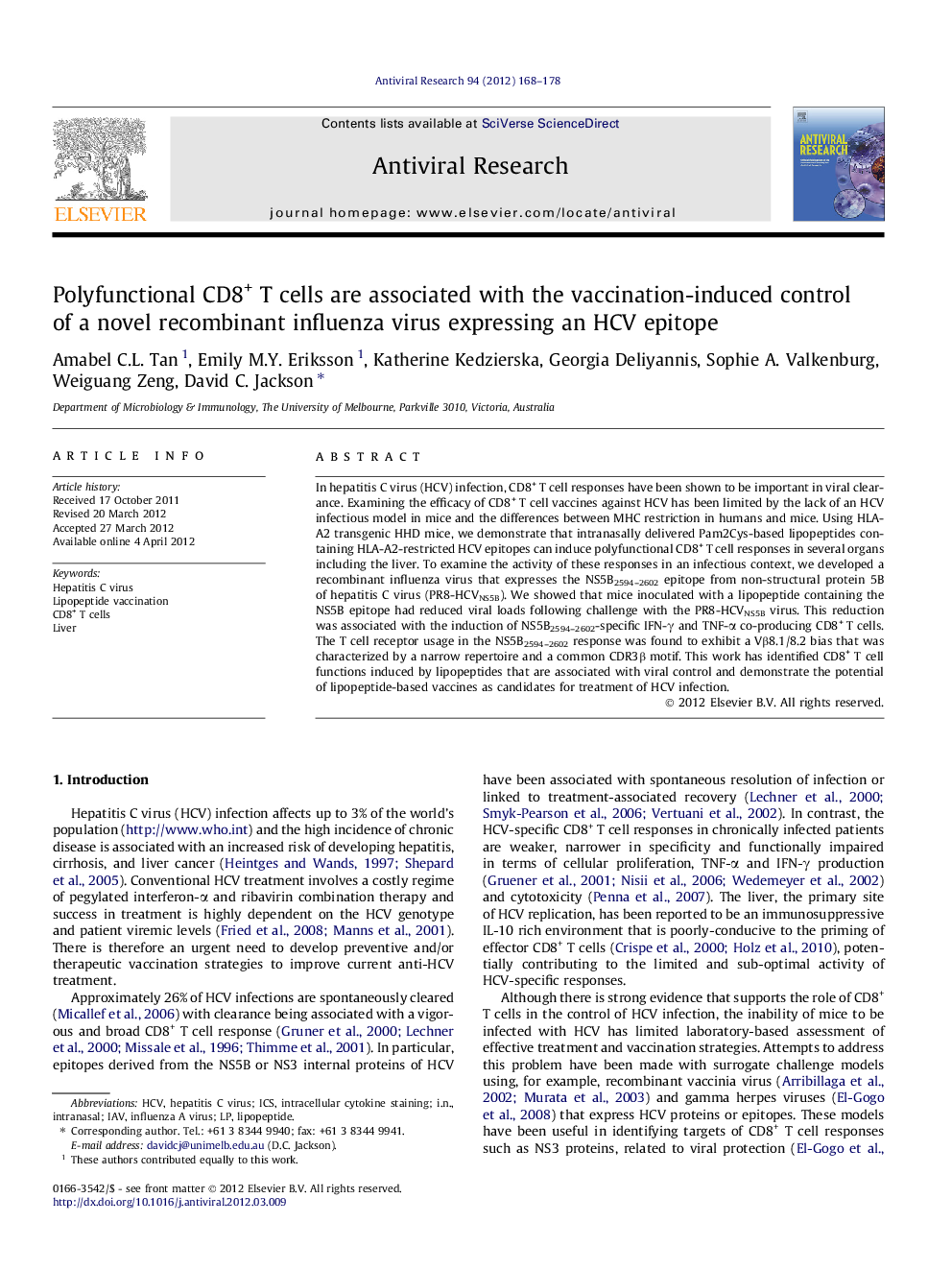| Article ID | Journal | Published Year | Pages | File Type |
|---|---|---|---|---|
| 5822469 | Antiviral Research | 2012 | 11 Pages |
In hepatitis C virus (HCV) infection, CD8+ T cell responses have been shown to be important in viral clearance. Examining the efficacy of CD8+ T cell vaccines against HCV has been limited by the lack of an HCV infectious model in mice and the differences between MHC restriction in humans and mice. Using HLA-A2 transgenic HHD mice, we demonstrate that intranasally delivered Pam2Cys-based lipopeptides containing HLA-A2-restricted HCV epitopes can induce polyfunctional CD8+ T cell responses in several organs including the liver. To examine the activity of these responses in an infectious context, we developed a recombinant influenza virus that expresses the NS5B2594-2602 epitope from non-structural protein 5B of hepatitis C virus (PR8-HCVNS5B). We showed that mice inoculated with a lipopeptide containing the NS5B epitope had reduced viral loads following challenge with the PR8-HCVNS5B virus. This reduction was associated with the induction of NS5B2594-2602-specific IFN-γ and TNF-α co-producing CD8+ T cells. The T cell receptor usage in the NS5B2594-2602 response was found to exhibit a Vβ8.1/8.2 bias that was characterized by a narrow repertoire and a common CDR3β motif. This work has identified CD8+ T cell functions induced by lipopeptides that are associated with viral control and demonstrate the potential of lipopeptide-based vaccines as candidates for treatment of HCV infection.
⺠Lipopeptide vaccination elicits polyfunctional CD8+ T cells at multiple organ sites. ⺠The T cell receptor repertoire of the NS5B-specific response was narrow and “public”. ⺠Vaccination protects against a recombinant influenza virus. ⺠Polyfunctional CD8+ T cells are associated with control of the recombinant HCV influenza virus.
